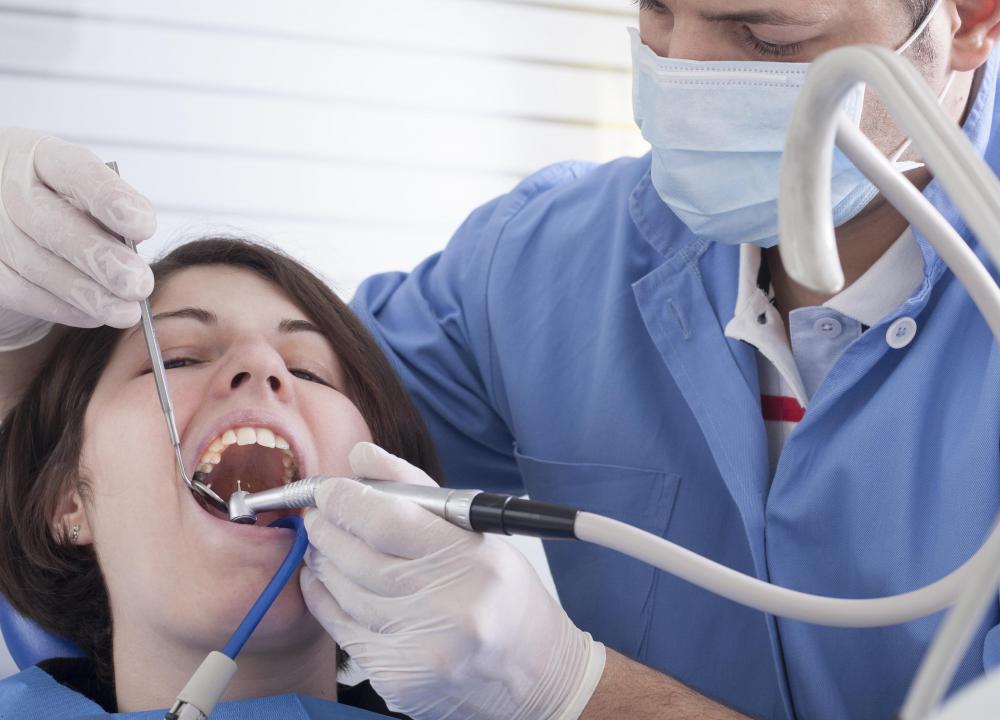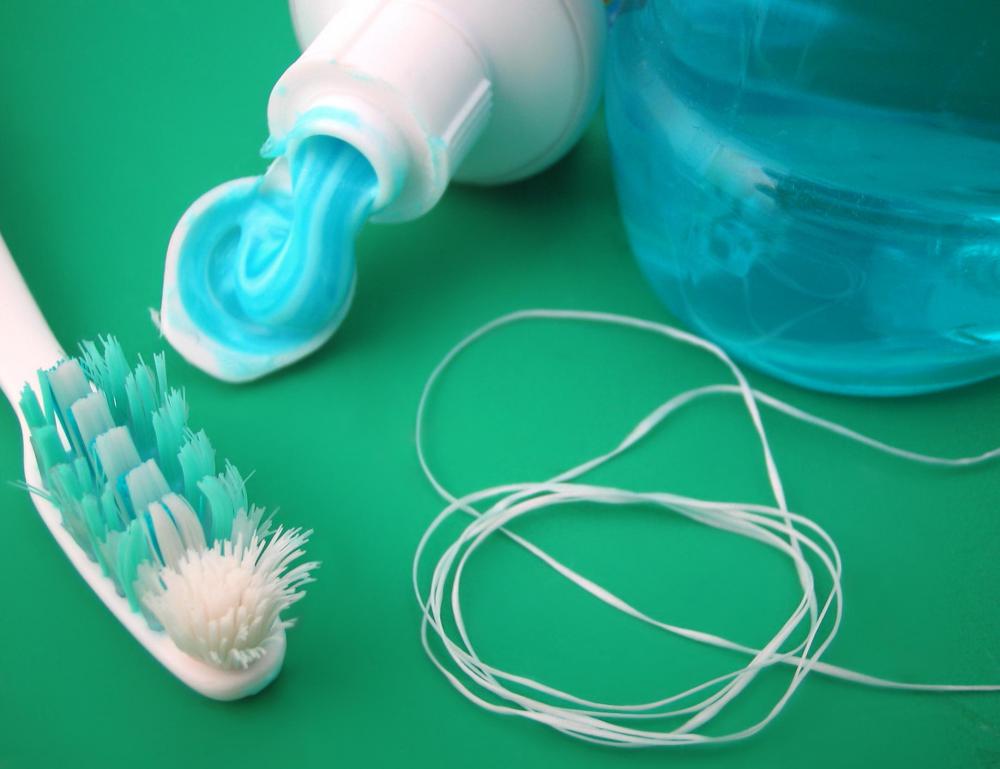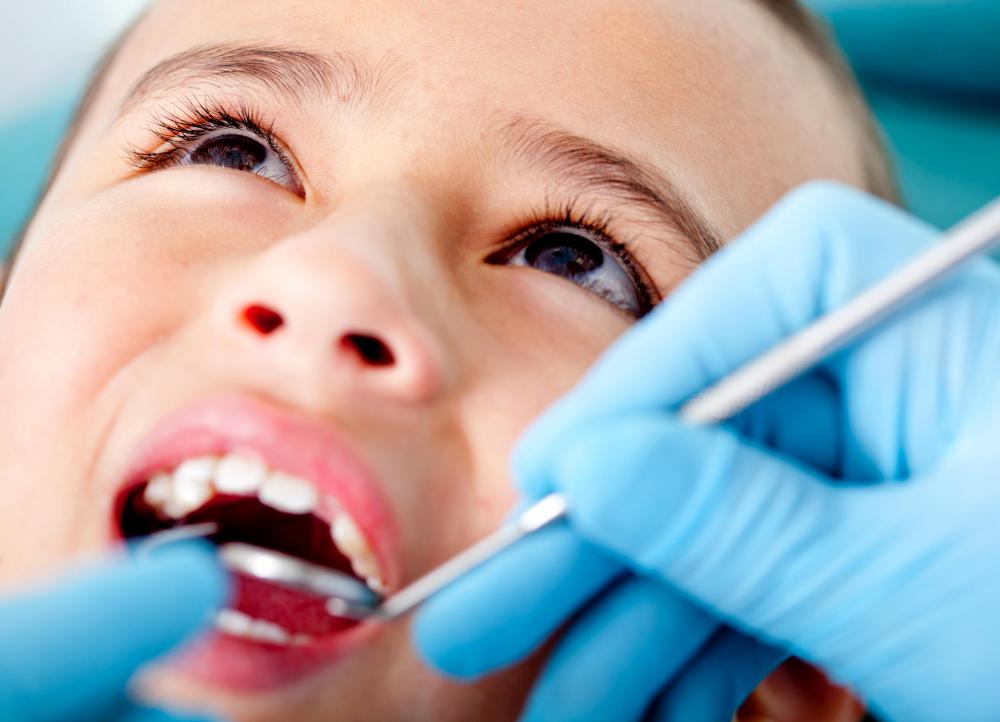At TheHealthBoard, we're committed to delivering accurate, trustworthy information. Our expert-authored content is rigorously fact-checked and sourced from credible authorities. Discover how we uphold the highest standards in providing you with reliable knowledge.
What Is a Dental Drill?
A dental drill, which might also be called a dentist’s drill, is a piece of dental equipment that a dentist can use to drill out a cavity or other decay from a patient’s damaged tooth. The dental drill is a metallic instrument that is powered by an electronic motor and that emits a high-pitched sound. It is believed that people who fear the dentist are intimidated by the sound of the drill more than the actual dental experience.
The modern electric dental drill was invented in the late 1800s and has become an essential piece of equipment in a dental office. The handle of the drill consists of a long, cylindrical metal body that evolves into a rounded head. The rounded head has a concave portion that encases the fitting for a steel or tungsten carbide bur. The tail of the drill is connected to an insulated electrical cord, which then connects to the foot-operated power motor. The motor drives the drill at 300,000 to 400,000 rotations per minute.

The dentist should fit the dental drill with the desired size and style of bur that will most precisely remove the decay from the damaged tooth. These burs come in many different sizes and styles. They can be made of tungsten carbide or steel, and they often have a diamond coating to aid in precision cutting. The dental bur consists of the shank, neck and head. The shank portion is inserted into the drill, and the head is used to precisely remove the decay.

After the bur has been fitted to the end of the dental drill, the dentist should insert the rounded head portion into the patient’s mouth and depress the foot motor to activate the drill. The dentist then carefully maneuvers the bur, cutting out the decay from the damaged tooth to prepare it for a filling or cap. There is a high-pitched whine that is emitted from the dental drill when it is in use. It is this sound that can strike fear in the patient and might cause him or her to fear all dental procedures.

When the dentist has completed his or her work, the dental drill should be sanitized. The most common forms for sterilizing sensitive dental equipment such as burs and drills are saturated steam and autoclave systems. This process removes all blood-borne pathogens and saliva-borne pathogens that could be present on the tools. This is an essential part of the dental hygienist’s job to ensure patient safety.
AS FEATURED ON:
AS FEATURED ON:















Discuss this Article
Post your comments